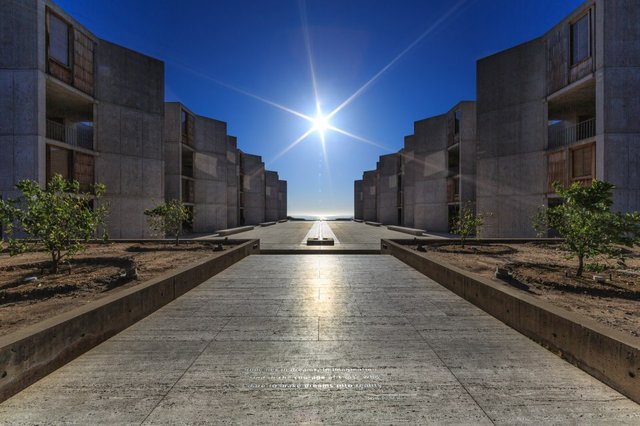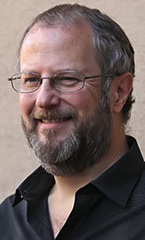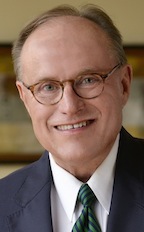Daily Business Report-March 23, 2015
The system is founded on third generation satellite technology
ViaSat and Boeing Announce
Global Satellite Broadband Network
ViaSat and Boeing have announced a global satellite broadband network — the ViaSat Flexible Broadband System — to enable regional operators around the world to offer broadband services.
The Flexible Broadband System service will take advantage of the ViaSat-2 Lite satellite, the result of an ongoing collaboration between Boeing and ViaSat.
The two companies had previously announced the new satellite will be launched in the summer of 2016, and that they have contracted with SpaceX to get the system into orbit.
ViaSat-2 is expected to cover seven times the geographic area and offer twice the bandwidth economics advantage of ViaSat-1, which the two claim is currently the highest capacity satellite in orbit. Both operate in the Ka-band. The ViaSat-1 provides broadband transmission up to 140 Gbps.
ViaSat executives have previously said that the designs of the two satellites are so radically different that comparing them simply on throughput does not accurately indicate the advantages of the new satellite.
This satellite is an adaptation of the newest generation Boeing 702HP satellite, the ViaSat-2. The ViaSat-2 Lite holds the ViaSat-2’s flexible payload within a Boeing “all-electric” 702 small platform satellite design.
The smaller size and higher payload capability will lower the cost of the providing broadband, according to ViaSat, which will make it more affordable to regional network operators.
ViaSat’s coverage includes both North and Central America, the Caribbean, and a section of South America. Transportation routes from Europe to North America are areas of included coverage.
The system is founded on third generation satellite technology. It includes a ground network, or service delivery platform, which supports customer connectivity. The platform is meant to make ISP customization possible, and enhance satellite bandwidth.
Mayo Clinic and Scripps
Identify Age-Reversing Drugs
A research team from The Scripps Research Institute (TSRI), Mayo Clinic and other institutions has identified a new class of drugs that in animal models dramatically slows the aging process, alleviating symptoms of frailty, improving cardiac function, and extending a healthy lifespan.
They found two drugs — the cancer drug dasatinib (sold under the trade name Sprycel) and quercetin, a natural compound found in many fruits, vegetables, leaves and grains and also sold as a supplement that acts as an antihistamine and anti-inflammatory — that can kill senescent cells. These are cells that have stopped dividing and accumulate with age, accelerating the aging process.
The scientists coined the term “senolytics” for this new class of drugs.
“We view this study as a big first step toward developing treatments that can be given safely to patients to extend healthspan or to treat age-related diseases and disorders,” said TSRI Professor Paul Robbins, who with Associate Professor Laura Niedernhofer led the research efforts for the paper at Scripps Florida. “When senolytic agents, like the combination we identified, are used clinically, the results could be transformative.”
General Atomics and U.S. Research Labs
Solve Heat Burst Problem with Nuclear Fusion
Researchers from General Atomics and the US Department of Energy’s Princeton Plasma Physics Laboratory have made a major breakthrough in understanding how potentially damaging heat bursts inside a fusion reactor can be controlled.
Scientists performed the experiments on the DIII-D National Fusion Facility, a tokamak operated by General Atomics in San Diego.
The findings represent a key step, General Atomics said, in predicting how to control heat bursts in future fusion facilities including ITER, an international experiment under construction in France to demonstrate the feasibility of fusion energy. This work is supported by the DoE Office of Science.
The studies build upon previous work pioneered on DIII-D showing that these intense heat bursts — called ELMs for short — could be suppressed with tiny magnetic fields.

Salk Opens Doors to Community
The Salk Institute will open its doors to the community on Saturday, April 11, for the third annual Explore Salk, a once-a-year event featuring staff-guided lab tours, self-guided architectural tours, science booths and talks by Salk researchers. Family-friendly activities include a Kids Discovery Zone, a mobile science lab with hands-on experiments and a virtual lab tour with a Q&A session for preteens interested in pursuing a career in science.
New to this year’s Explore Salk are intimate, hands-on lab tours, which offer a more in-depth experience than the general lab tours. The general lab tours give visitors a free behind-the-scenes look at two Salk laboratories.
Visitors can also enjoy two science talks during the day. Saket Navlakha, Salk assistant professor, will give a science talk titled “How Biology Solves Technology Problems.” Special guest Eric Topol, director of the Scripps Translational Science Institute and chief academic officer at Scripps Health, will discuss his most recent book, “The Patient Will See You Now: The Future of Medicine is in Your Hands.”
Admission to Explore Salk is free, but online preregistration is required for the lab tours. For complete details, please visit www.salk.edu/exploresal
OLP Hosts Women’s Symposium
The Academy of Our Lady of Peace (OLP) will host its inaugural Women’s Symposium on Friday, March 27, featuring prominent women leaders on panels sharing insights on a range of topics aimed at helping the next generation of women leaders.
The symposium will be held from 9 a.m. to 12:45 p.m. at the school, 4860 Oregon St., San Diego (Normal Heights).
“We’re reimagining the traditional career day,” said Head of School Lauren Lek. “The Women’s Symposium offers the young women of OLP an opportunity to learn and grow from their interactions with top female influencers. Programs like this serve our mission of helping generations of young leaders become all of which woman is capable.”
Limited VIP tickets are available at no cost. Register online at http://bit.ly/1zMlmQE.
Apartments Open for Low-Income Seniors
Today will be the grand opening of Versa at Civita, a new 150-unit apartment complex restricted to low-, very low- and extremely low-income renters. The opening ceremony will be at 11 a.m.
Versa, part of Mission Valley’s Civita development, was developed by Chelsea Investment Corp.
City of San Diego’s inclusionary affordable housing regulations for residential development require developers to dedicate 10 percent of their homes to units that are affordable to households with incomes at or below 65 percent of the San Diego Area Median Income. The San Diego Housing Commission administers the Inclusionary Housing Fund for the city of San Diego. Tours will be conducted following the program.
Council to Vote on Pact to
Stop Police Resignations
The San Diego City Council today will consider whether to approve a five-year contract with the San Diego Police Officers Association that calls for 3.3 percent raises in each of the contract’s final two years. The proposed compensation agreement is expected to strengthen recruiting and retention, which have been problems for several years. In addition to the 6.6 percent pay increase, the package offers incentive-based increases.
City officials expect the contract extension will cost around $92 million over the next five years, with $62 million of that stemming from the restoration of holiday pay and an increased health care, equipment and uniform allowance.
According to the SDPOA, the agreement could be a solution to the department’s recruiting and retention struggles.
— City News Service
Personnel Announcements
Studio 2055 Hires Brand Strategist

CARLSBAD — Studio 2055, a creative branding agency, has hired 15-year industry veteran Rob Rusnak as brand strategist and web developer. The company said Rusnak’s addition will allow the studio to offer a more integrated approach to branding with further expansion of web development and design.
Rusnak previously worked with such brands as MikroScan Technologies and Trango Systems. He attended San Diego State with a focus on fine art, and additional training at UC San Diego in web and digital design.
Gary Wright Joins Brown Law Group

Gary W. Wright has joined Brown Law Group in San Diego as of counsel. Wright’s practice focuses on labor and employment law, with emphasis on traditional labor law, union campaigning, unfair labor practice charges, collective bargaining, contract administration and arbitration law.
Wright has served on the executive council of the Tennessee Bar Association Labor Law Section and is a member of the American Bar Association Labor Law Section. Before entering private practice, he was a trial attorney for the National Labor Relations Board. He supervised and conducted hundreds of union representational elections and prosecuted companies and unions for violating provisions of the National Labor Relations Act.




